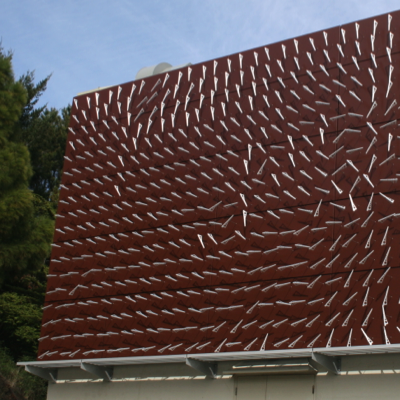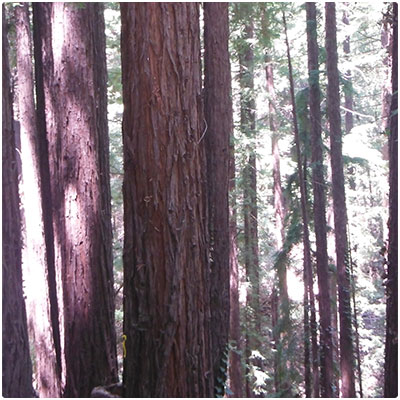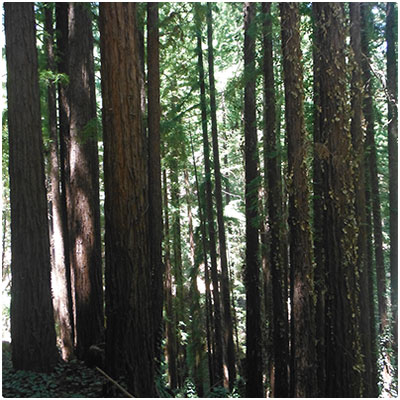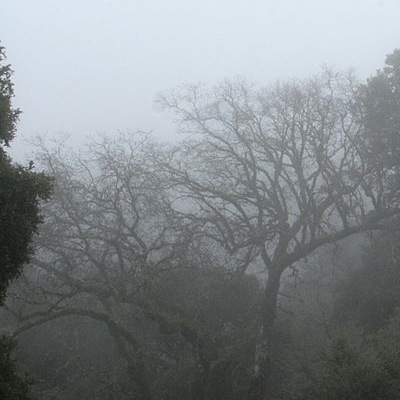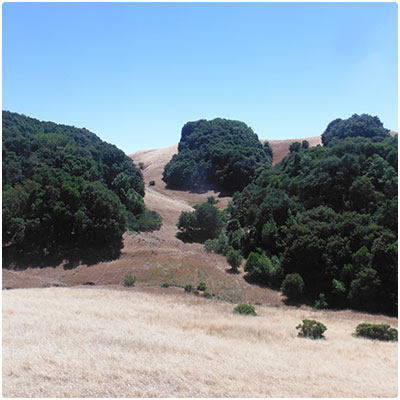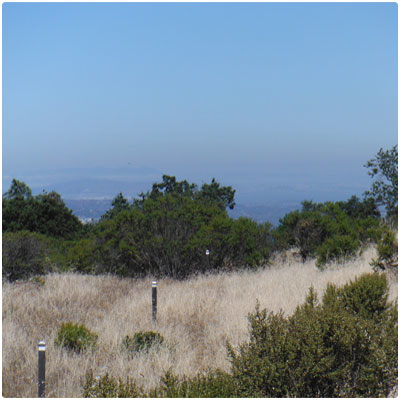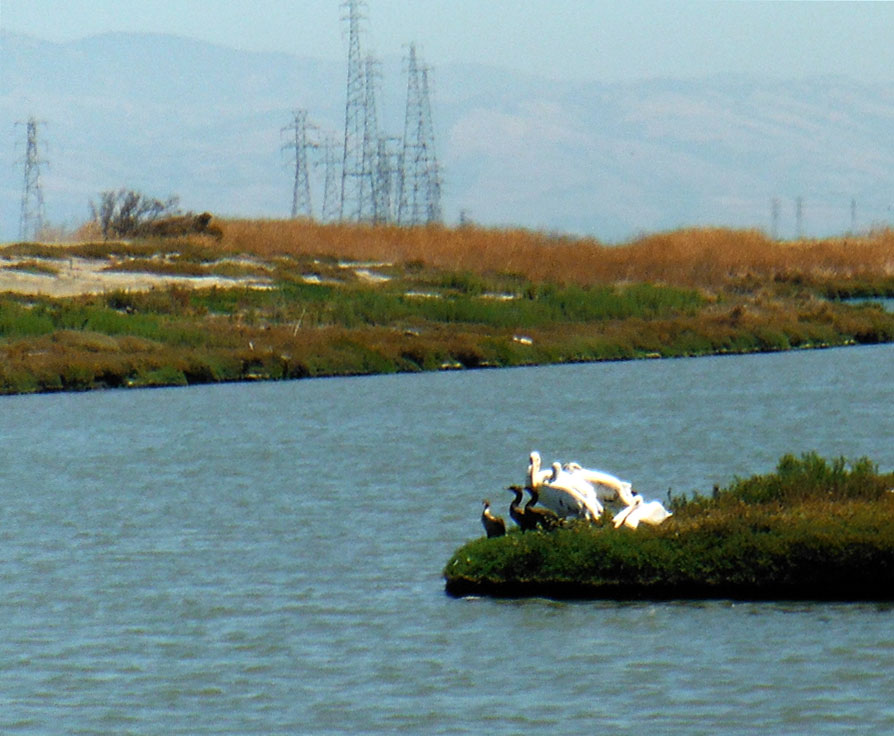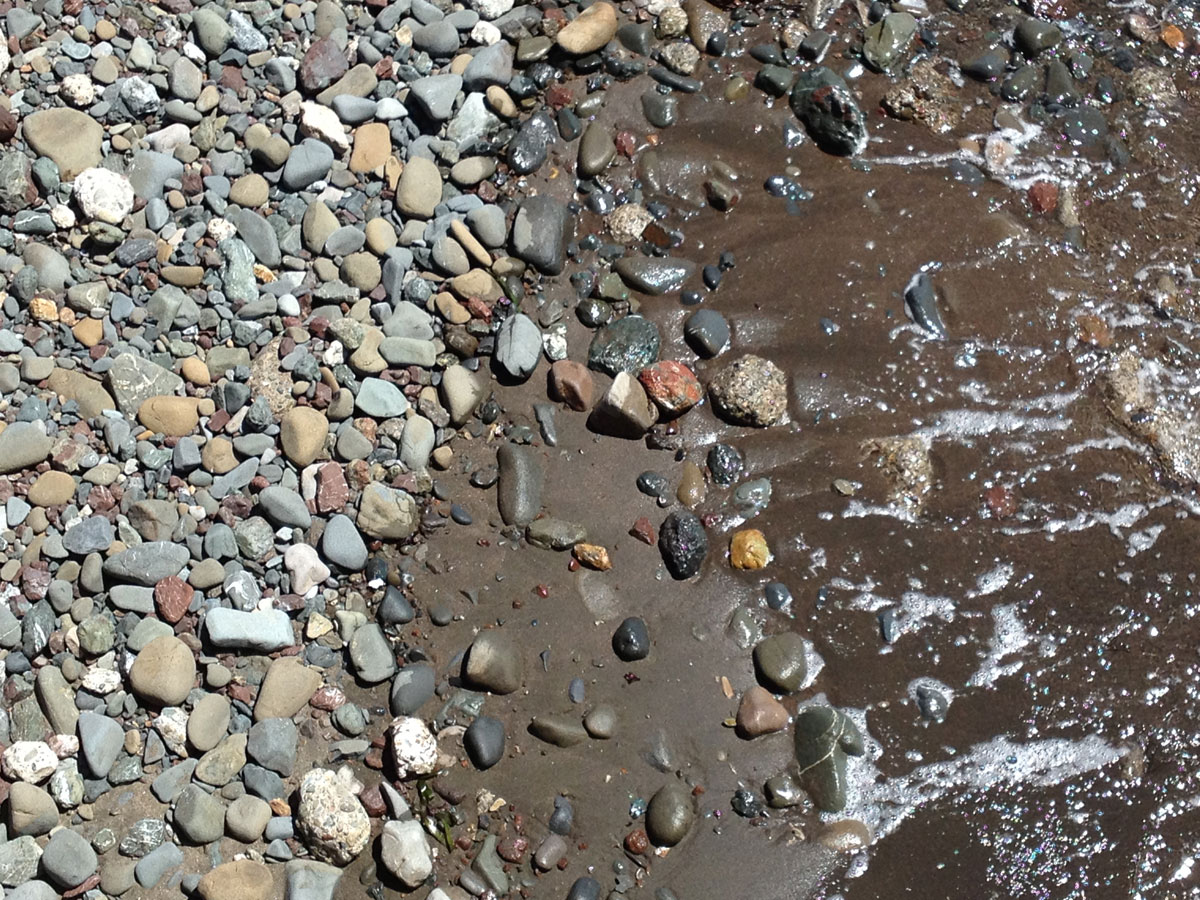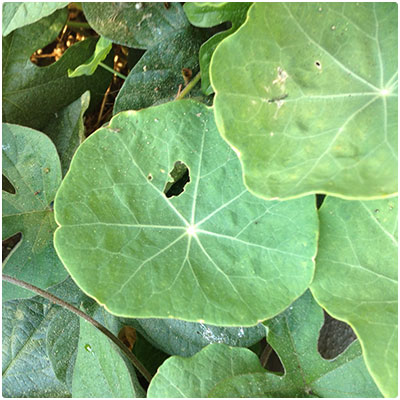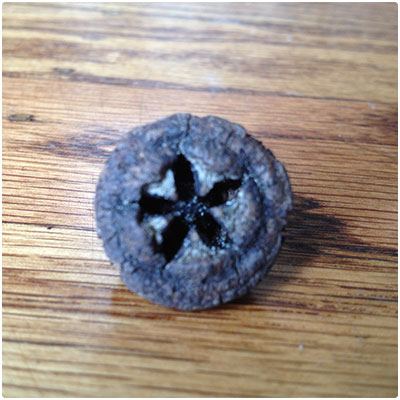Artist Charles Sower likes to create sculptures that allow us to see things that are invisible or that we don’t usually notice. Windswept contains 500 arrows that spin and move when the wind blows. It shows the complex interaction between wind and the environment, allowing us to “see” the wind! Sculptures like these can inspire us to think about wind as a potential source of energy.
One of the trees that this preserve is known for is the redwood tree -- also called the sequoia tree. This species of tree is so old that it was around at the same time as the dinosaurs! Can you guess why they are called "red wood" trees? They can grow to be over 370 feet tall and live to be more than 2,000 years old.
As you walk along the trails around Skyline Ridge, you may notice trees with red, flaky bark. These trees are called madrone for the spanish word for strawberry tree since their fruit look like strawberries. When these fruit dry up they have hooked barbs like a fishing hook, that attach themselves to large animals to spread their seeds.
Scat, or animal droppings, can be nasty, but it can tell us a lot about animals and what they eat. From large horse droppings filled with hay to small owl pellets with the bones of rats, they can be very useful to scientists. If you look closely at the photograph above you can see pieces of undigested apple in this scat!
Redwood trees only grow on the Oregon and California coast and there are a lot of Redwood trees here. Redwoods are the tallest trees on Earth! Can you see the tops of the redwood trees? Redwood trees can grow 5 to 7 feet in a single year -- that’s as tall as an adult!
As you walk along the trail, if you are very quiet you may hear a tapping sound. It's likely the sound of woodpeckers pounding holes into trees. The woodpecker uses its beak to hammer holes into trees to get to insects or juicy tree sap, or to store food such as acorns. By eating the insects, woodpeckers can help keep the insects from damaging the tress.
While spotting an animal can be difficult, it is much easier to find evidence of them. As you walk along the trail look for coyote, bird, moutain lion, and snake tracks. Perhaps it's better that you only see the tracks of these animals!
Los Trancos Open Space Preserve is an ideal spot to learn about earthquake geology because the San Andreas Fault runs through the middle of the preserve. It is one of the world’s longest and most active faults. There are 9 stations along the trail that contain information about the fault’s land features. The valleys, peaks, and water bodies (lakes, streams, reservoirs) that you see along this trail were made by the San Andreas Fault!
Palo Alto Baylands Nature Preserve is a marshy area near the San Francisco Bay. Before this area was made into a public park, it was a trash landfill. The second of two landfills was closed in 2011 and in 2014 it will be opened as an addition to the Baylands Nature Preserve. To make this area open to the public the landfill had to be sealed and then the park had to be built around and on top of it. The designers of the park wanted to include art and other human-made structures to creatively cover the landfill. The park areas are a combination of natural structures and human-made structures, and it can be a challenge to figure out which ones are which!
At the Bay Area Science Festival today? So are we! Here are some ideas for science conversations and activities you can try with your family while you're here.
Buffalo in San Francisco? They are actually American bison. Two Bison arrived in San Francisco in 1890, transported from the U.S. Great Plains region. By 1918 there were 30 Bison here. Some were born from the original two and others were moved here. An illness spread soon after that and the Bison were moved to another location. Today, the Bison you see are the descendants of some that were brought to the area in 1984. You may not see the Bison doing much. They like to graze on grass and they stand up for most of the day. If you are lucky, you may be able to observe Bison behavior. If their tail is relaxed they likely feel undisturbed. If their tail is raised slightly they are likely excited. If they are nervous their tail might arch. When their tail is straight up they are likely threatened or ready to challenge another Bison. If a Bison is bucking they may be in a playful mood or have been taken by surprise.
If you wander around Bol Park you will find a small stream. Is there water in it? When California is in periods of drought small creeks and streams can dry up. Go on a hunt for rocks near the stream. If you find the right kind of rocks, you can get them wet and make “paint” from them. There are so many different natural paint colors to explore in nature!
Some insects eat leaves and other natural materials. Have you ever noticed that insects are eating the plants around us? Go on a bite mark hunt! Find things that have been eaten by insects. Look for leaves, flowers, grasses, twigs, or anything else you think insects might eat.
Many plants produce seeds so that they can grow new plants. Seeds come in many different shapes, sizes, and colors. How many different kinds of seeds can you find here?
There are lots of different kinds of birds in California including wookpeckers. The woodpecker uses its beak to hammer holes into trees to get to insects or juicy tree sap, or to store food such as acorns.
© Copyright 2014 Stanford University

